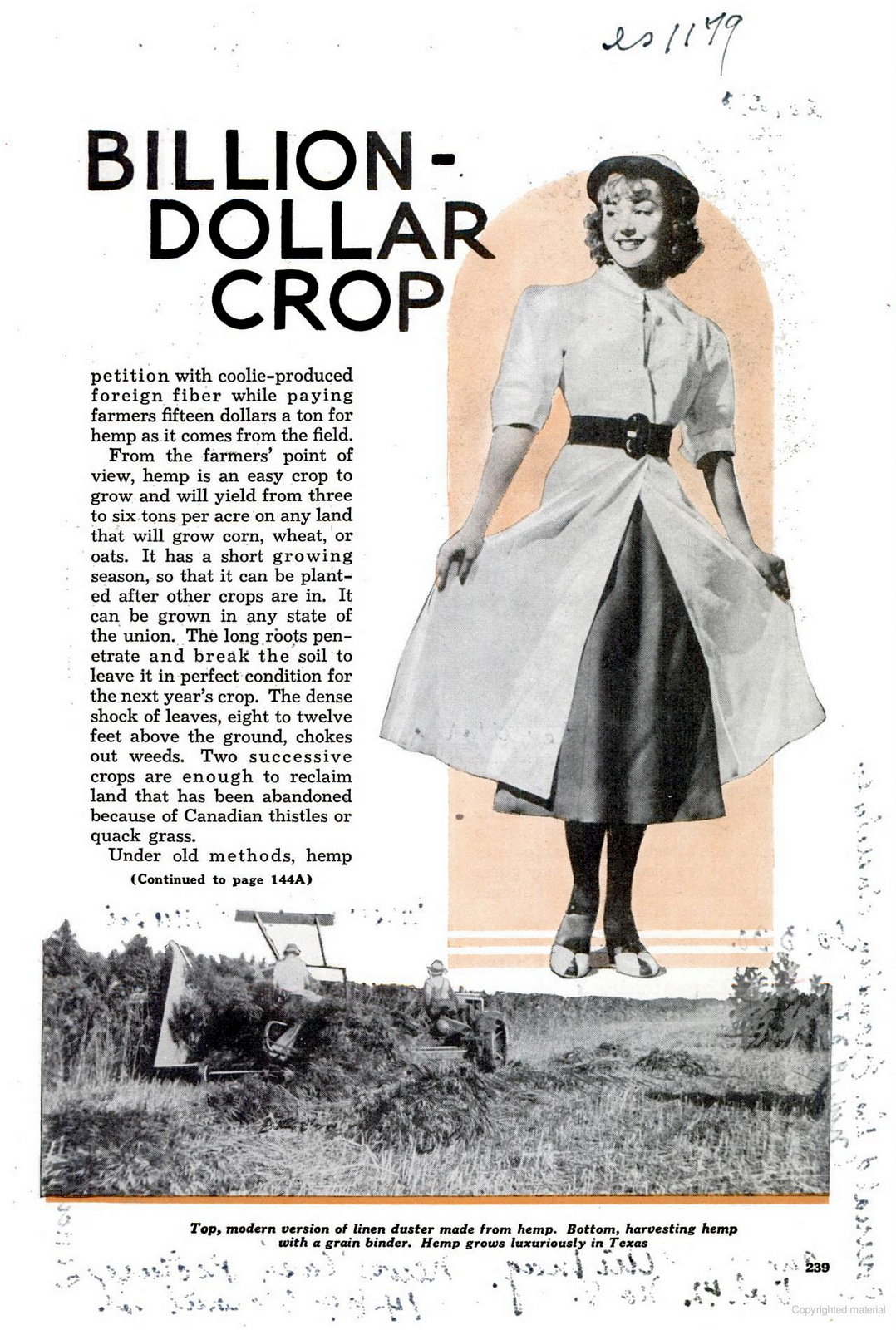The Return Of Hemp, America’s ‘Billion-Dollar Crop’
Hemp was a major part of American history until misguided drug laws conflated industrial hemp with marijuana. Eric Steenstra, president of Vote Hemp, tells Mnar Muhawesh on ‘Behind the Headline’ about how that happened and how it may be making a comeback.
By Mnar Muhawesh @mnarmuh | July 13, 2016
https://youtu.be/dGrV9vlKob0
MINNEAPOLIS — Hemp’s had a role in almost every chapter of American history:
It was illegal for early colonists of Jamestown to not grow hemp. Our founding fathers were enthusiastic hemp farmers. The Declaration of Independence was drafted on hemp paper.
When Americans moved west, they took hemp-covered wagons onto new frontiers. And when the Gold Rush hit, the 49ers wore Levi’s hemp dungarees as they sought their fortunes.

official MintPress sponsor
In 1938, Popular Mechanics named it America’s “New Billion-Dollar Crop.” Noting its many uses and how easy farmers find it to grow, the magazine added: “It can be grown in any state of the union.”
Yet it wasn’t long before this last fact was no longer true.

Click to expand
Hemp and marijuana are different varieties of the same species of plant, cannabis Sativa L. And they’re grown for different purposes: “Marijuana is the flowering tops and leaves of psychoactive varieties of Cannabis that are grown for their high THC content,” according to Vote Hemp. “Hemp … is the low-THC oilseed and fiber varieties of Cannabis, which is grown for their seeds and fiber.”
Marijuana is classed as a Schedule I drug by the federal government. Unfortunately for the hemp industry, industrial hemp cultivation is blocked by the same draconian federal laws which outlaw marijuana possession and consumption.
The U.S. is one of the few industrialized nations to ban hemp cultivation. So, even though hemp can clothe, house and nourish us, even though we can use it to make vehicles that won’t choke landfills with rusting metal, even though it can help to clean polluted soil for future crop growth — Americans are often unable to maximize their use of the centuries-old plant.
Here to explain why the federal government continues to keep hemp out of American fields is Eric Steenstra. He’s the president of Vote Hemp, a grassroots advocacy group that’s leading the charge to bring hemp farming back to the U.S.
Learn more about The Disabled’s Hidden Civil Rights Movement, Seeking Justice 32 yrs After Bhopal & Hemp’s Comeback:
https://youtu.be/nBeAI9dmFYs
Thanks to: http://www.mintpressnews.com
Hemp was a major part of American history until misguided drug laws conflated industrial hemp with marijuana. Eric Steenstra, president of Vote Hemp, tells Mnar Muhawesh on ‘Behind the Headline’ about how that happened and how it may be making a comeback.
By Mnar Muhawesh @mnarmuh | July 13, 2016
https://youtu.be/dGrV9vlKob0
MINNEAPOLIS — Hemp’s had a role in almost every chapter of American history:
It was illegal for early colonists of Jamestown to not grow hemp. Our founding fathers were enthusiastic hemp farmers. The Declaration of Independence was drafted on hemp paper.
When Americans moved west, they took hemp-covered wagons onto new frontiers. And when the Gold Rush hit, the 49ers wore Levi’s hemp dungarees as they sought their fortunes.

official MintPress sponsor
In 1938, Popular Mechanics named it America’s “New Billion-Dollar Crop.” Noting its many uses and how easy farmers find it to grow, the magazine added: “It can be grown in any state of the union.”
Yet it wasn’t long before this last fact was no longer true.

Click to expand
Hemp and marijuana are different varieties of the same species of plant, cannabis Sativa L. And they’re grown for different purposes: “Marijuana is the flowering tops and leaves of psychoactive varieties of Cannabis that are grown for their high THC content,” according to Vote Hemp. “Hemp … is the low-THC oilseed and fiber varieties of Cannabis, which is grown for their seeds and fiber.”
Marijuana is classed as a Schedule I drug by the federal government. Unfortunately for the hemp industry, industrial hemp cultivation is blocked by the same draconian federal laws which outlaw marijuana possession and consumption.
The U.S. is one of the few industrialized nations to ban hemp cultivation. So, even though hemp can clothe, house and nourish us, even though we can use it to make vehicles that won’t choke landfills with rusting metal, even though it can help to clean polluted soil for future crop growth — Americans are often unable to maximize their use of the centuries-old plant.
Here to explain why the federal government continues to keep hemp out of American fields is Eric Steenstra. He’s the president of Vote Hemp, a grassroots advocacy group that’s leading the charge to bring hemp farming back to the U.S.
Learn more about The Disabled’s Hidden Civil Rights Movement, Seeking Justice 32 yrs After Bhopal & Hemp’s Comeback:
https://youtu.be/nBeAI9dmFYs
Thanks to: http://www.mintpressnews.com






 Sat Mar 23, 2024 11:33 pm by globalturbo
Sat Mar 23, 2024 11:33 pm by globalturbo

